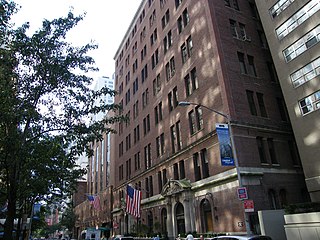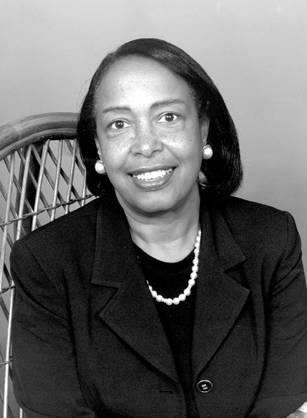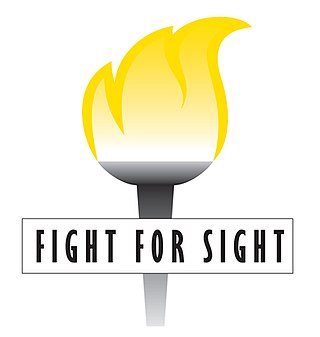
Ophthalmology is a surgical subspecialty within medicine that deals with the diagnosis and treatment of eye disorders.

A cataract is a cloudy area in the lens of the eye that leads to a decrease in vision. Cataracts often develop slowly and can affect one or both eyes. Symptoms may include faded colours, blurry or double vision, halos around light, trouble with bright lights, and difficulty seeing at night. This may result in trouble driving, reading, or recognizing faces. Poor vision caused by cataracts may also result in an increased risk of falling and depression. Cataracts cause 51% of all cases of blindness and 33% of visual impairment worldwide.

Optometry is a specialized health care profession that involves examining the eyes and related structures for defects or abnormalities. Optometrists are health care professionals who typically provide comprehensive primary eye care.
The National Eye Institute (NEI) is part of the U.S. National Institutes of Health (NIH), an agency of the U.S. Department of Health and Human Services. The mission of NEI is “to eliminate vision loss and improve quality of life through vision research.” NEI consists of two major branches for research: an extramural branch that funds studies outside NIH and an intramural branch that funds research on the NIH campus in Bethesda, Maryland. Most of the NEI budget funds extramural research.
The Lions Eye Institute (LEI) is an Australian medical research institute affiliated with the University of Western Australia. It was established in 1983 with support of the Lions Clubs of Western Australia and headquartered in the Perth suburb of Nedlands, Western Australia. The LEI is a not-for-profit centre of excellence that combines an ophthalmic clinic with scientific discovery developing techniques for the prevention of blindness and the reduction of pain from blinding eye conditions.

Manhattan Eye, Ear and Throat Hospital (MEETH) is a specialty hospital in New York City that was founded in 1869 and is currently located on the Upper East Side of Manhattan at 210 East 64th Street. After 131 years as an independent entity, in 2000 MEETH affiliated with Lenox Hill Hospital, a 652-bed acute care hospital, established in New York City in 1857 and located at 77th Street in Manhattan. MEETH is recognized in medical circles for its long history of contributions in developing the fields of ophthalmology, otolaryngology and plastic surgery. MEETH provides thousands of patients a year with treatment in its ambulatory surgery facilities.

Patricia Era Bath was an American ophthalmologist and humanitarian. She became the first female member of the Jules Stein Eye Institute, the first woman to lead a post-graduate training program in ophthalmology, and the first woman elected to the honorary staff of the UCLA Medical Center. Bath was the first African-American to serve as a resident in ophthalmology at New York University. She was also the first African-American woman to serve on staff as a surgeon at the UCLA Medical Center. Bath was the first African-American woman doctor to receive a patent for a medical purpose. A holder of five patents, she founded the non-profit American Institute for the Prevention of Blindness in Washington, D.C.
Suseela Prabhakaran is an Indian ophthalmologist and chief ophthalmic surgeon at Divya Prabha Eye Hospital in Trivandrum, India. She started her career as a lecturer in ophthalmology in the Department of Medical Education at the state government of Kerala.
The Illinois Eye & Ear Infirmary (IEEI) is a center of ophthalmology and otolaryngology research and clinical practice.

Fight for Sight is a nonprofit organization in the United States which funds medical research in vision and ophthalmology. It was formed in 1946 as the National Council to Combat Blindness (NCCB), the first non-profit organization in the United States to fund vision research; 2011 marked its 65th anniversary.
The SUNY Eye Institute (SEI) is a consortium of scientists from five campuses within the State University of New York. Participating institutions include four SUNY medical schools and the SUNY College of Optometry. The SEI was organized in 2007 and formally recognized by SUNY in 2009. Its aims are (1) to foster collaboration among SUNY research scientists in support of research on all aspects of visual function, with an emphasis on diseases of the human eye and their treatment, and (2) to enhance training in clinical and basic visual sciences in the U.S. State of New York. It receives financial support from SUNY through the SUNY REACH program.
Sightsavers is an international non-governmental organisation that works with partners in developing countries to treat and prevent avoidable blindness, and promote equality for people with visual impairments and other disabilities. It is based in Haywards Heath in the United Kingdom, with branches in Sweden, Norway, India, Italy, Republic of Ireland, the United Arab Emirates, and the US.

The Organisation for the Prevention of Blindness is an international non-governmental organisation whose actions today focus exclusively on French-speaking countries in Africa. Their mission is to preserve and restore sight amongst some of the most under-privileged communities in the region. The OPC's principal actions concern blindness prevention, treatment and the elimination of blinding diseases, such as onchocerciasis, trachoma, glaucoma and cataracts as well as formal ophthalmological training.

Konrad Pesudovs is an Australian optometrist and outcomes researcher in ophthalmology; recognised as the leading optometrist researcher worldwide in terms of H-Index and total citations. He is SHARP Professor of Optometry and Vision Science at the University of New South Wales (2020-). He was the Foundation Chair of Optometry and Vision Science at Flinders University from 2009 to 2017.
The Himalayan Cataract Project (HCP) was created in 1994 by Dr. Geoffrey Tabin and Dr. Sanduk Ruit with a goal of establishing a sustainable eye care infrastructure in the Himalaya. HCP empowers local doctors to provide ophthalmic care through skills-transfer and education. From its beginning, HCP responds to a pressing need for eye care in the Himalayan region. With programs in Nepal, Ethiopia, Ghana, Bhutan and India they have been able to restored sight to over one million people since year since 1994.
Stephen H. Tsang is an American ophthalmologist and geneticist. He is currently a Professor of Ophthalmology, and Pathology and Cell Biology at Columbia University Irving Medical Center in New York.

The Krembil Research Institute, formerly known as the Toronto Western Research Institute, is an academic medical research institute in Toronto. It is one of the largest research institutes in Canada focusing on human neurological disease.

Emily Ying Chew is an American ophthalmologist and an expert on the human retina with a strong clinical and research interest in diabetic eye disease and age-related eye diseases. She currently works for the National Eye Institute (NEI) at the National Institutes of Health (NIH) in Bethesda, Maryland, where she serves as deputy director of the Division of Epidemiology and Clinical Applications (DECA) and the Institute's deputy clinical director. She designs and implements Phase 1, 2 and 3 clinical trials at the NIH Clinical Center. Chew is board certified in ophthalmology.
Cochrane Eyes and Vision (CEV) is a collaboration of researchers and healthcare professionals who prepare systematic reviews to study interventions pertaining to the treatment of eye disease and visual impairment. Though many of the systematic reviews focus on common eye diseases, reviews have been prepared for varied eye topics, including screening prevention and rarer eye diseases.









